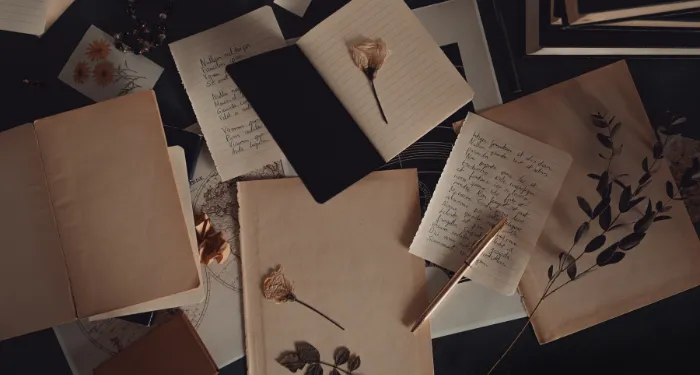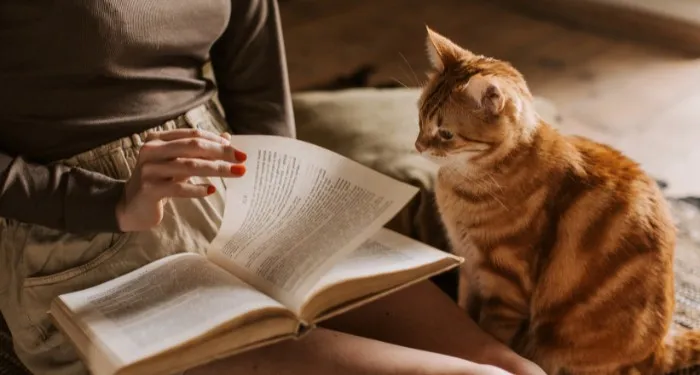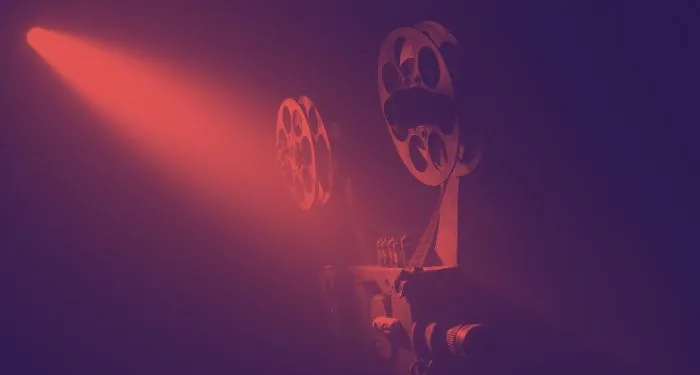Oh, honey. It simply crushes them. I have been teaching literature to college students, most of them younger than me, for over twenty years. And whether they’re trying to write stories or write about them, there comes a time every semester when I have to break it to them. That idea you have? That inspired reading? That formal innovation? It isn’t new. (Even the notion that it isn’t new isn’t new: “There is nothing new under the sun” comes from Ecclesiastes.)
We live in a time especially ensorcelled by novelty. Artists have always valued originality, but there’s this competitive edge to it now, and it can turn litigious on a dime. Who did it first has become more important than who did it better; the key is to stake a claim and capitalize on it. Has anyone ever said this? Has anyone ever written like this? the kids ask me with glowing green light in their eyes. My answer is almost always, Yes, actually. The light fades. Off they slink, crestfallen.
I’d find it amusing if it weren’t so frustrating. I can’t seem to impart to them the joy of discovering yourself in the wilds of the past, of connecting with the experiences of others, a feeling James Baldwin already captured (sorry!) in that well-memed quote: “You think your pain and your heartbreak are unprecedented in the history of the world, but then you read.” I can’t seem to get these young writers to appreciate the conceptual richness of citation and allusion. Worst of all, I can’t seem to shake the feeling that I’m always bursting bubbles of creative inflation among those who really should know better—not just in academia but among the literati, too.
Here goes anyway. Nettie Jones scooped every last one of you. Her debut novel, Fish Tales, first published in 1984 and just reissued by Farrar, Straus and Giroux, was far more daring for its time than any of the recent literary trends that have had everyone blushing and gasping and scribbling. It is as sexy as novels by Sally Rooney, as druggy as novels by Tao Lin, as gross as novels by Ottessa Moshfegh, as queer as novels by Garth Greenwell, as violent as Hanya Yanagihara’s A Little Life. In most of these respects, it exceeds even the work of that polymath of outrage, Bret Easton Ellis—and he published his first novel, Less Than Zero, in 1985, a year later.
Fish Tales deals explicitly with menstruation, menopause, masturbation, and artificial insemination. One character’s hatbox of drugs contains “hashish, Percodan, blue Valiums, Quaaludes, Dexedrine, cocaine in the rock, and the black glass she needed.” There are frank discussions of the usefulness and etymology of words such as “stud,” “dyke,” and “queer.” There’s a scene in which a woman pops a bottle of champagne and immediately shoves its neck up a man’s anus for a brief, bubbly enema—at his delirious request. Confessing to having committed an act of horrific violence, a woman touches her clitoris: “I took my finger out of my mouth, placing it squarely on my little girl. She was marbleized.” Like her mentor Gayl Jones (no relation), Nettie Jones, now eighty-four, was simply ahead of her time.
Fish Tales is narrated by Lewis Jones (some relation), a blue-eyed beauty in her thirties who ping-pongs between Detroit and New York City in the 1970s, hanging out with people interested in manifesting freedom at all times and in every manner. They are what we might call para-artistic—both on the edges of and parasitic on the worlds of art, literature, and fashion. They are gorgeous and brutish; they get rich and go broke; they do a lot of drinking and drugs, a lot of dancing and petty crime; they fall in and out of love; they marry and cheat and divorce and keep living together anyway. And through all of this fabulous chaos, they enjoy indiscriminate, multilimbed orgies—which Lewis sometimes calls “orgyettes” or “sexettes”—with one another.
The novel’s title is a bawdy pun, if you read “fish” as a euphemism and “tales” as a homonym. At one point mention is made of a drag queen who “had smeared sardine oil on her twat to make her smell like an authentic girl.” At another point Lewis and her friend Ciarra list “the names of each man we had ever fucked and remembered,” marking the “once-onlys,” “less-than-three-times,” and “over-fives” before they “exchange lists and draw a line under the name of shared experiences.” Lewis’s body count is eighty-eight; Ciarra’s is two hundred and includes Lewis’s ex-husband; “cross-referencing confirmed our belief that we truly were sexually free.”
Free or no, the sex in Fish Tales rides the line between sadomasochism and plain old assault. Lewis, often intoxicated to the point of perceptual dissolution—“That dark music-filled room became all colors to me”—fucks and hurts herself, fucks and hurts other people. Rape hovers over everything; true pleasure shows up occasionally, summoned by Lewis’s vibrator, which she calls “Oh Baby.” And of course, “pain is pleasure for some,” according to a woman named Sestra, possibly an imaginary friend or sister or inner schism in Lewis, who visits the psych ward on and off, and switches into and out of dissociative states.
The novel is structured to imitate her ongoing splitting apart. Part 1, “Disconnect,” is named for the advice a young Lewis gets from a forty-three-year-old woman who has just married one of her former lovers: “Disconnect your brain from your pussy, girl.” This first half of the novel is made up of very brief chapters named after the great range of people whom Lewis’s pussy has had the pleasure—or displeasure—of encountering since she was twelve years old.
There’s Jason, a “long, skinny, shit-yellow boy” who coldly denies knocking her up. There’s Peter Brown, her eighth-grade social studies teacher, who abuses her through her adolescence and beyond. There’s Woody, the man whom Lewis marries, then divorces when she gets “tired of being an adulteress,” but who continues to support her lavish lifestyle. There’s Kitty, a beautiful, queer sex worker whose “skin was tan, almost the color” of his “cocoa-brown coat,” and who speaks in Hollywood tongues like a Thomas Pynchon character.
There’s Sage, like “those Masai Africans…if they came in yellow skin,” with “high cheekbones,” “a Modigliani neck,” and “fine golden-red hair” on his arms. There’s Prince, who looks to Lewis like a “rapist” with his “small recessed eyes, thick nose, pouting mouth, moist lips, strong hands.” There’s Flower, “a real redhead, freckles and all,” who “must have weighed three hundred and seventy-five pounds naked.” There’s Augus, who resembles a “young tanned Paul Newman” with his “ivory body,” “plump ass,” and “long legs covered with golden hair.”
The novel’s staccato rhythm continues in part 2, “Connect,” though it lingers on only one lover, portraying Lewis’s relationship—part caretaking, part romance—with Brook, a tall, beautiful, brilliant textbook writer with “snake-belly white” skin and blue eyes, who happens to be a quadriplegic because of a high school wrestling accident. Lewis learns to attend to his physical needs, which are described in unflinching detail—emptying his urinal, accomodating his wheelchair, taking advantage of a surprise erection—and she blossoms under the light of his intelligence: “I am in love,” she swoons. “He’s the first man I met who I feel is superior to me.”
The two go for picnics and talk about aesthetics and read The Americans and The Portrait of a Lady in bed (“Henry James was our favorite”). But soon enough Lewis introduces him to her world and tries to take over his. The affair turns dark as the jealous, traumatized Lewis comes to relish her newfound power over a man. Part 2 climaxes in a cryptic, manic, perverse act of violence between them.
Bookending this diptych structure are a prologue and a closing paragraph in italics about one Mrs. Annie Simmons, who one day comes high-stepping from her home, “butt-naked” but for pink satin heeled slippers: “Her scraggy breasts swayed as she slowly switched down those steps, kick, sway, switch forward. Kinky red hairs covered her private parts.” She bends at the waist, then squats, “dog fashion,” masturbating until the cops arrive and her anguished husband throws a blanket over her. Given that Lewis herself is referred to as “Annie Lou” and “Anna Lou” in the novel, it isn’t clear whether Mrs. Annie Simmons is a woman Lewis once knew or the woman she eventually becomes.
Fish Tales is breathtaking and brutal, disorienting and delightful. It didn’t do very well when it was published in the 1980s, even though it was one of the last books Toni Morrison edited before she left her job at Random House to devote more time to her writing. The manuscript arrived on her desk because of Gayl Jones, whose career Morrison had launched by editing and publishing Corregidora (1975) and Eva’s Man (1976), and who was one of the only writers she genuinely seemed to envy: “I shuddered before the awesome power of this young woman,” Morrison wrote in an essay for Mademoiselle.
Morrison never said anything like that about Nettie Jones—at least not publicly. But she admired Fish Tales, which she described in a letter to the author as “extraordinary.” Michael Gonzales has written about the testy relationship between Jones and Morrison.1 “Toni was my editor, but I only met her once,” Jones told him.
I was not what she was used to handling, because I didn’t know she was the queen. Toni was a literary lion and I didn’t act accordingly, but if I knew then what I know now, I’d be, “Yes, yes’m, Ms. Morrison.”
When I spoke to Jones, she still seemed to feel that Morrison, on her way out, hadn’t done enough for Fish Tales at Random House and had stymied its success.
Jones’s friend, the literary agent Marie Brown, told Gonzales that the world simply wasn’t ready for the novel. “It was a one-of-a-kind story,” she said, “but that’s not always a good thing in publishing, because people act like they don’t know how to market it or get it reviewed.” Early readers of Fish Tales were indeed befuddled and unnerved by it, and some misread Jones’s Sadean satire as merely—or badly—pornographic. One reviewer dismissed it as “plain icky”; another called it “an excursion into perversion,” a jab all the more insulting for the rhyme.
The subject matter of the novel may still seem edgy to the easily shocked, but its style is what feels cutting edge to me: fragmented yet smooth, autofictional though not confessional, somehow both tight and loose. When she was asked in 1989 whether Lewis is a stand-in for her, Jones declared, “It’s all me!” When she was asked at a bookstore event this spring how much of the novel is true, she smiled coyly and said, “Most of it.” She originally conceived of Fish Tales as a screenplay, which may explain its vignette structure, what she calls a textual “collage,” a word she told Gonzales she had picked up from Romare Bearden: “He said, ‘Black artists are collages, because we certainly make something out of nothing.’”
Jones made something truly remarkable out of the razing of Lewis to nothing: this is what can happen to a woman when she’s wielding a dangerous freedom, the novel seems to say. Make no mistake, though—this is no trauma plot. There’s no catharsis or healing or triumph over adversity to be found here. There’s no definitive comeuppance, either. Lewis is very much a classic antihero: charismatic, engaging, hilarious, unreliable, unpredictable, unaccountable.
Fish Tales is a masterpiece of narrative voice. Jones knows her way around a metaphor—“His laughter sounded the way clear gold apple cider looks”—and riffs marvelously on double meanings: “Jason had a crooked smile and he had a crooked way”; “Men, I think, believe vintage pussy comes dry like vintage champagne”; “We dropped the acid and our clothes at the door.” The uncanny sensation is that Lewis is speaking directly to us, even as she stylishly skirts everything.
The novel in this way relies both on E.M. Forster’s imperative for fiction—“Only connect”—and on the frisson of the disconnect, which is what allows for those electric jolts to fly across the gaps in Lewis’s story: between words, between events, between versions of a self, and, most radically, between identities. Because, though it’s never stated outright in the novel, it’s obvious to the discerning that Lewis and most of her lovers and friends are black, in all of their phenotypic variety. And, though some of them might hesitate to claim it or name it, all of their relationships with one another are queer.
The novel’s unjust first reception may have been due to Random House’s confusing decision to market it as a black female version of Naked Lunch. This was galling to Jones. Like Jean Toomer, who wrote the epigraph Gayl Jones suggested for the novel—“The human fish is intricate and hidden; the appearance of his fins are deceptive”—Nettie Jones didn’t want to be published as a black writer. She had written a “colorless” book: “I wanted to present my characters as human beings, their character not determined by their color.”
Jones wished to maintain this colorlessness for herself, as well: “I refused to have a photo of me, because I did not wish to have anyone not buy my book because of my race.” The Random House designer put a black woman on the cover anyway, a decision Jones begged the publishers to reverse and bemoans to this day: “The book was in final production, so I gave in, but that picture defeated my desire to not include color on the cover or contents.”
It is telling that black reviewers seem to have been the only ones astute enough to note this crucial omission in the contents. In his otherwise mixed review of Fish Tales in these pages, Darryl Pinckney wrote:
One of the remarkable aspects of this novel is that race doesn’t matter. There is no sociology; even with descriptions of reddish hair on legs, curly heads, and broad noses it is hard to tell who has rhythm and who hasn’t.2
Margo Jefferson’s more positive review pointed out that “you can’t tell who’s white and who’s black unless you know how to look beyond light skin and fair hair…or listen,” and concluded,
What’s most exciting about Fish Tales is how it plays with boundaries and finalities: when sex is a constant, gender bends and twists slowly in the wind; with race as a given, its codes and signs run riot.3
I believe that this experiment is part of why Toni Morrison found Fish Tales so extraordinary. Although I can only speculate about the direction of influence, I don’t think it’s a coincidence that Morrison was editing this novel at the same time that she was reimagining her only published short story, “Recitatif,” which features a pair of girlfriends, one white, one black, but never discloses which one is which race.4 There is a world in which this undoing of identity positions in fiction wouldn’t signify much, wouldn’t disconcert or even interest us. Alas, we do not yet live in that world.
But praise the muses that Fish Tales has been brought back to life in this one, so we can appreciate just how avant-garde it was. Its voice is as clear and intimate and alive as it must have sounded to its best readers four decades ago. It reminds me of what it feels like when you’re on the phone with someone, and they start telling you their secrets, and you stay up listening late into the night, into the dawn, utterly gripped right until the moment the line disconnects.



















 English (US) ·
English (US) ·